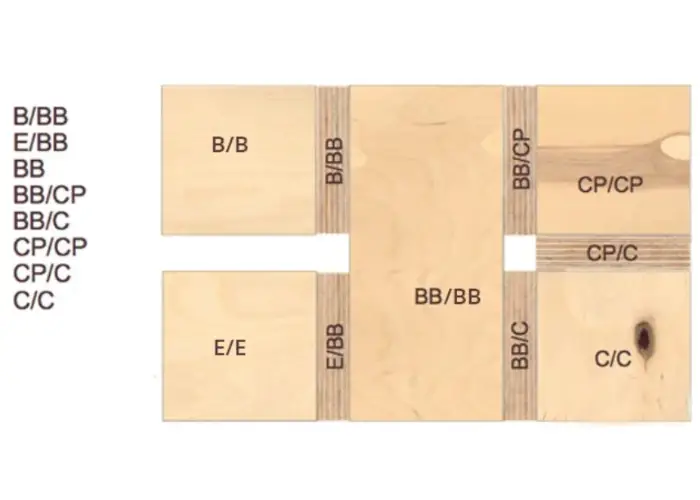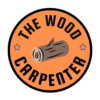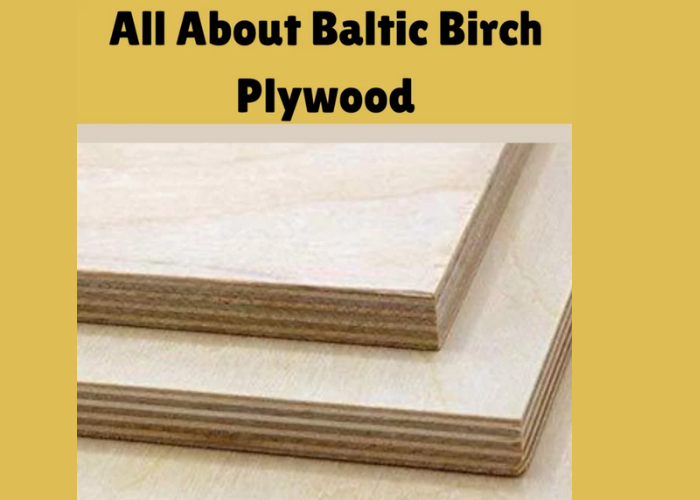Baltic Birch Plywood
Baltic Birch plywood is a premium plywood product known for its strength, stability, and aesthetic appeal. It is widely used in woodworking, cabinetry, and various DIY projects. Here is a comprehensive guide to understanding Baltic Birch plywood in detail.
Manufacturing Process of Baltic Birch Plywood
Baltic Birch plywood is made by bonding together thin birch veneers using a strong adhesive. The process involves several key steps:
Peeling and Sorting: Birch logs are peeled to produce thin veneers, which are then sorted by thickness and quality.
Layering: The veneers are layered with their grain directions at right angles to each other, creating a cross-grain pattern. This enhances the strength and stability of the plywood.
Gluing and Pressing: The layers are glued together using a waterproof adhesive and pressed under high pressure and heat to form a durable and robust panel.
Also read: Bending Plywood
Luan Plywood: A Versatile Building Material
Characteristics
Uniformity: The veneers are of consistent thickness, resulting in a void-free, stable, and aesthetically pleasing sheet.
Strength and Durability: The cross-grain construction and multiple plies (each roughly 1mm thick) provide excellent strength and resistance to warping, cracking, and splitting.
Appearance: The uniform birch veneers create a smooth surface that is ideal for staining, painting, or finishing with a clear coat. The edges have an attractive stacked line pattern, making it suitable for projects with exposed edges.
Water Resistance: The use of waterproof adhesive makes Baltic Birch plywood resistant to moisture and humidity, though it is not completely waterproof.
Grades
Baltic Birch plywood is graded based on the quality of its outer veneers, following the Russian intergovernmental standard GOST 3916.1-96. The grades are:
B/BB: B grade front with a uniform light color and no plugs or open cracks; BB grade back with some color variations and limited plugs.
BB/BB: Both sides have a generally uniform color with some defects like plugs and pin knots.
CP/CP: More prevalent defects and unlimited plugs.
C/C: Utility grade with inconsistent color, mineral staining, and larger knots.

How Baltic Birch Plywood Appearance Varies by Grade
The appearance of Baltic Birch plywood varies significantly with different grades, each defined by the quality and characteristics of the face and back veneers. Here is a detailed breakdown of the various grades and their visual differences:
B/BB Grade
Face Veneer (B): The face veneer is clear and free of defects, with a light and uniform color. It is smooth and aesthetically pleasing, making it suitable for visible surfaces in high-quality furniture and cabinetry.
Back Veneer (BB): The back veneer allows for 3-6 color-matched patches, which are oval in shape and egg-sized. These patches are used to repair defects and are color-matched to blend with the surrounding wood. The back may also have some minor imperfections and tight pin knots.
BB/BB Grade
Face and Back Veneers (BB): Both the face and back veneers allow for 3-6 small color-matched patches on average. These patches are used to repair defects and are designed to blend with the surrounding wood. Additionally, there may be some light mineral streaks and tight pin knots. This grade is suitable for applications where both sides of the plywood will be visible.
BB/CP Grade
Face Veneer (BB): The face veneer is similar to the BB grade, allowing for 3-6 small color-matched patches and some light mineral streaks.
Back Veneer (CP): The CP grade back veneer is downgraded from BB grade and allows for unlimited patches and sound knots. However, open defects are not permitted. This grade is often used when one side of the plywood will be visible and the other side will be hidden or less critical.
CP/CP Grade
Face and Back Veneers (CP): Both the face and back veneers allow for unlimited sound knots, repaired splits, and patches. This grade is designed for applications where the appearance is less critical, such as for laminating or structural purposes. The panels are sound on both sides but may have numerous visible repairs and imperfections.
C/C Grade
Face and Back Veneers (C): This grade allows for patches, open knots, small veneer splits, and other imperfections. Veneer laps and small core voids are permitted. The panels are not sanded and are typically used for structural purposes where appearance is not a primary concern.
Visual Summary
B/BB: Clear, defect-free face; back with minor patches.
BB/BB: Both sides with minor patches and possible mineral streaks.
BB/CP: Clear face with minor patches; back with unlimited patches and sound knots.
CP/CP: Both sides with unlimited patches, sound knots, and repairs.
C/C: Numerous visible defects, open knots, and splits; used for structural purposes.
Applications
Baltic Birch plywood is used in a variety of applications due to its strength, stability, and attractive appearance:
Furniture and Cabinetry: Ideal for making cabinets, drawers, and furniture due to its durability and ease of machining.
Musical Instruments: Used in the construction of drums and guitar bodies.
Specialty Uses: Popular for making skateboards, speaker boxes, and custom trailers.
DIY Projects: Suitable for various DIY projects, including shelving, tables, and woodworking tools.
Sizes and Thicknesses
Baltic Birch plywood is available in various sizes, with the most common being 4 feet by 8 feet and 5 feet by 5 feet sheets. Thicknesses range from 1/8 inch to 1 inch, with corresponding ply counts that enhance its strength and stability.
Ethical Considerations
Baltic Birch plywood is sourced from countries in the Baltic region, including Estonia, Latvia, Lithuania, Russia, Finland, and Sweden. Some consumers may prefer to avoid Russian products due to geopolitical concerns, so it is important to verify the origin of the plywood if this is a concern.
Conclusion
Baltic Birch plywood is a high-quality, versatile material that offers excellent strength, stability, and aesthetic appeal, making it a popular choice for a wide range of woodworking and DIY projects. Its uniformity, durability, and attractive appearance make it a preferred material for both professional woodworkers and hobbyists alike.
FAQ
1. What is Baltic Birch Plywood?
Baltic Birch plywood is a high-quality plywood made from birch veneers, primarily sourced from the Baltic region, including countries like Russia, Finland, Estonia, Latvia, and Lithuania. It is known for its strength, stability, and uniform appearance.
2. Why Choose Baltic Birch Plywood?
Durability: It is resistant to warping, cracking, and splitting due to its multiple plies, each roughly 1mm thick, which provide excellent strength and stability.
Versatility: Suitable for a variety of projects, including cabinetry, furniture, flooring, and musical instruments like drums and guitar bodies.
Appearance: The uniform birch veneers create a smooth, attractive surface that is perfect for staining, painting, or finishing with a clear coat.
Affordability: Compared to other high-quality wood materials, Baltic Birch plywood is relatively affordable, making it a cost-effective choice for DIY projects.
Water Resistance: The plywood is resistant to moisture and humidity due to the waterproof adhesive used in its construction, though it is not completely waterproof.
3. What are the Natural Characteristics of Baltic Birch Plywood?
Pinholes: Small holes that can occur in the surface, more likely in lower grades.
Knots: Areas where a branch or other piece of wood was growing, varying in size and shape.
Oval Patches: Areas where defects have been cut out and filled in, leaving an oval-shaped patch.
Mineral Streaks: Discoloration caused by minerals in the soil, ranging from light brown to dark black.
4. Where Does Baltic Birch Plywood Come From?
Baltic Birch plywood typically comes from countries in the Baltic region of Europe, including Estonia, Latvia, and Lithuania. Some manufacturers also source their birch plywood from Russia, Finland, and Sweden.
5. Is Baltic Birch Plywood Environmentally Friendly?
The environmental impact of Baltic Birch plywood depends on the sourcing practices of the manufacturers. It is important to verify the origin and sustainability certifications of the plywood to ensure it meets your environmental standards.
6. How Should Baltic Birch Plywood be Finished?
Baltic Birch plywood can be stained, painted, or finished with a clear coat. Its smooth surface takes glue and stains easily, and the edges can be left exposed and simply sanded and finished for a clean look.
Also read:
OSB vs Plywood: 8 Differences You Need to Watch Out For

